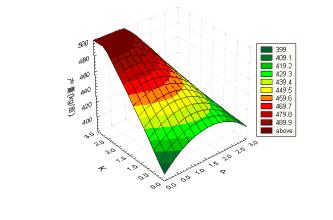Why Choose Balanced Fertilization
Balanced fertilization is a good choice for efficient fertilizer utilization and for sustainable high production. Long-run tests have revealed that the singular element of nitrogen (N), or N and phosphorus (P) created deficiencies of potassium (K) that can only be overcome by application of K fertilizers. More emphasis should also be attached to other essential nutrients as well as the use of manures.

Balanced fertilization is a key to improve fertilizer use efficiency
It is widely believed that inputs and outputs of nutrients in agro-ecosystems have to balance for sustainable agricultural production. Outputs that exceed inputs lead to impoverishment by which way agricultural yield will not sustain in the long run. And vice versa, inputs that exceed outputs result in fertility of the system and in turn to nutrient loss, making agricultural yield unsustainable from the angle of environment protection. The points mentioned above are the basis of “balanced fertilization”. However, both agreement and debate exist about the policy, for some people challenged the latter about how to make it operational and how to bring it into force in practice. That is the purpose of this paper to briefly discuss the concepts and pros and cons of balanced fertilization as a policy tool for regulating the nutrient losses from agriculture to groundwater and surface waters. Before doing so, we briefly summarize the main mechanisms that control the losses of N and P from agriculture.
The points mentioned above are the basis of “balanced fertilization”. However, both agreement and debate exist about the policy, for some people challenged the latter about how to make it operational and how to bring it into force in practice. That is the purpose of this paper to briefly discuss the concepts and pros and cons of balanced fertilization as a policy tool for regulating the nutrient losses from agriculture to groundwater and surface waters. Before doing so, we briefly summarize the main mechanisms that control the losses of N and P from agriculture.

It is less doubtful that China can be self-sufficient in the supply of N and P fertilizers, but highly unlikely this will be achieved for K in the foreseeable future. With the invention of the Haber-Bosch process in 1913, which converts inert atmospheric N2 into ammonia, and the ability to increase nitrogen (N) fertilizer production, the rapidly growing food demand of an exploding global population in the second half of the 20th century could be met. But this has meant that increasing amounts of reactive N, in form of fertilizers, are being used in agriculture. At the same time, with the development of industrialization and transport, progressively more fossil fuel is burnt, which has also released reactive N in the form of NOx. Today, the release of reactive N into the environment in the form of ammonia, nitrates and their derivatives as well as in the form of organic N is in the order of 165 Mt (OTTER and SCHOLES, 2003), which is about 15 times greater than the human contribution in 1860 and twice the current amount of reactive N from biological fixation
 In short-term experiments, N fertilizer alone had a good effect. However, with time this proved to be a poor practice. High and stable yields can only be achieved and maintained when N, P and K are combined rationally. Furthermore, applying organic manure along with NPK fertilizer was beneficial because it supplemented P and K, added some secondary and micronutrients, and improved the physical and biological characteristics of the soil.
In short-term experiments, N fertilizer alone had a good effect. However, with time this proved to be a poor practice. High and stable yields can only be achieved and maintained when N, P and K are combined rationally. Furthermore, applying organic manure along with NPK fertilizer was beneficial because it supplemented P and K, added some secondary and micronutrients, and improved the physical and biological characteristics of the soil.
The effect of N fertilization on soil microbial functional genes was mitigated by the addition of P fertilizer in this P-limited paddy soil, suggesting that balanced chemical fertilization is beneficial to the soil microbial community and its functions.
Previous What is Integrated Management of Water and Fertilizer?
Next Popularization of Science on Slow and Controlled Release Fertilizer
